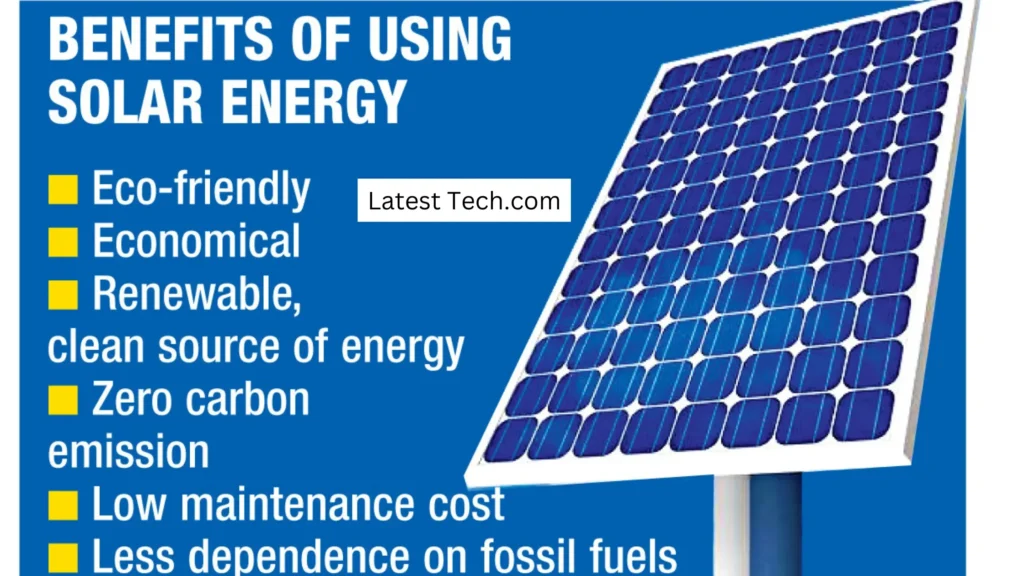Explore the benefits, challenges, and setup process of running Starlink on solar power. Find out how sustainable energy can help bring high speed satellite internet to remote areas.
Introduction
Starlink, the revolutionary satellite internet service from SpaceX, is continually expanding to bring reliable high speed internet to even places that are impossibly far and remote. As this system gains popularity, many users are starting to consider alternatives to source it with power, and more recently, solar.. Combining Starlink with solar power is doubly practical – not just green – for off grid living, rural areas, and disaster prone areas. This guide details all the practical information you’ll need to know in order to run Starlink on solar power, such as benefits, challenges, cost considerations, and setup instructions.
What Is Starlink, and How Does It Work?
Starlink has high speed and low latency internet helping you stay connected using a constellation of satellites in low earth orbit. Starlink satellite based technology is different from traditional broadband because it provides global coverage, which makes it especially well suited to places that are remote or under served. The system comprises three main components:
Starlink Dish: The nearest satellite is connected with a satellite dish.
Router: It allows you to share it to your devices over a Wi-Fi network.
Power Supply: It uses 50–100 watts of electricity.
This doesn’t require a whole lot, seen as it hasn’t yet been invented – a dependable power supply, which is mostly where people struggle, and this is heard to power, but solar is the ideal answer to this need.
Learn more about Starlink’s technology.
Why Solar Power Is Perfect for Starlink
There’s never a bad time for solar energy as a clean, renewable source of power and solar energy is a great source for the power Starlink needs. Here’s why:
- Energy Independence: The solar panels generate power independently also in the remote areas.
- Sustainability: Solutions that reduce reliance on non renewable resources are eco friendly using solar energy.
- Portability: For RVs, adventure spots, or emergencies, it can be done on the go.
Benefits of Using Solar Power for Starlink
Switching to solar power for Starlink provides numerous advantages, including:
1. Environmental Benefits
- Reduces carbon footprint.
- Promotes renewable energy use.
2. Financial Savings
- Lower electricity bills over time.
- Eligibility for government tax credits or rebates in some regions.
3. Off-Grid Connectivity
- Ensures internet access in areas without traditional power grids.
- Useful for disaster recovery operations.
4. Enhanced Reliability
- With a proper battery backup, solar systems can deliver uninterrupted power.
Starlink on Solar Power vs. Traditional Power Sources
| Parameter | Solar Power | Traditional Power Sources |
| Setup Costs | High | Moderate to Low |
| Operational Costs | Low (Free sunlight) | Moderate to High |
| Environmental Impact | Minimal | Significant |
| Suitability | Ideal for remote/off-grid areas | Best for urban or connected areas |
Challenges of Running Starlink on Solar Energy
Despite its advantages, using solar power for Starlink comes with specific challenges:
1. Initial Investment
- High upfront costs for solar panels, batteries, and inverters.
2. Weather Dependency
- Solar energy production decreases in cloudy or rainy conditions.
3. Energy Storage Requirements
- Adequate battery capacity is essential to store power for nighttime or low-sunlight periods.
4. Technical Setup
- Proper planning and installation are necessary for optimal performance.
Step-by-Step Guide to Powering Starlink with Solar Energy
1. Assess Power Requirements
Calculate Starlink’s energy needs, which typically range from 50–100 watts, depending on usage and environmental factors.
2. Choose Solar Panels
Opt for solar panels capable of generating enough energy to meet your daily consumption. For Starlink, 200W panels are commonly sufficient. Learn about the benefits of solar energy systems.

3. Install Battery Backup
Lithium ion batteries for energy storage investment. I like to recommend Starlink is powered from a 12V or 24V battery setup. As to batteries and their backups, you can get information about them from ACE Battery

4. Use an Inverter
Starlink necessitates reversing direct current (DC) from the solar power panels to the alternating current (AC) with which Starlink is powered.
5. Monitor and Optimize
Install monitoring systems to track power production and consumption, ensuring consistent performance.
Cost Analysis: Solar Power vs. Grid Electricity for Starlink
| Feature | Solar Power Setup | Grid Electricity |
| Initial Investment | High (Solar panels & batteries) | Low |
| Operating Cost | Minimal (Free solar energy) | Recurring (Monthly bills) |
| Reliability | Weather-dependent | High in urban areas |
| Eco-Impact | Zero emissions | High carbon footprint |
Practical Tips for Maximizing Solar Power Efficiency
- Position Panels Correctly: Make sure that panels are facing the sun in order to get the maximum exposure.
- Keep Panels Clean: With dirt and debris, efficiency is also reduced.
- Invest in High-Quality Batteries: Asgard storage offers a consistent performance.
- Use Energy-Saving Devices: It aims to reduce overall power consumption.
- Install a Charge Controller: Keeps the battery from overcharging and prolonging its lifespan as well.
Conclusion
When you combine Starlink with solar power, for the people looking for a solid internet without the negative environmental impacts, it’s truly a game changer. With the right investment in solar setup you can seamlessly integrate continuous connectivity with sustainability. For more information visit Latest Tech .
FAQs
1. Will a portable solar generator power Starlink?
Portable solar generators with enough wattage and capacity of battery to power it, are suitable for powering Starlink in temporary setups.
2. So how much solar power do I need to power Starlink?
In order to get up and running, you’re going to want to set up a solar setup that’s at least 50–100 watts steady, plus battery backup for nighttime usage.
3. How expensive is running Starlink on solar power?
However, the upfront cost of solar panels and batteries is high, but the operating cost is negligible, which is cheap in the long term.
4. But would it be better to use a Starlink battery on solar power?
They are suggested to use lithium-ion batteries because of their efficiency, operating life, and reliability. Get a better understanding of energy efficient solutions for off grid living.
5. Can Starlink work while there is no power?
With a correctly set up solar power and battery, Starlink can deliver continuous internet service during outages.
6. Is solar power the only option for Starlink?
However, solar power is most practical and accessible of the other renewable energy sources, such as wind turbines
7. What impact does weather have on Starlink on solar power?
In cloudy or rainy weather solar panel efficiency drops and a robust battery system keeps it running.
8. Can I put together the solar setup myself?
If you are an experienced person, you can DIY install but it’s advisable to get professional installation for optimal results. More about sustainable energy sets up.




